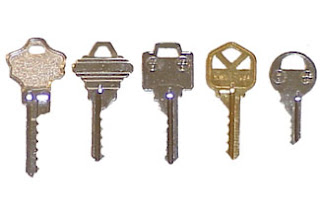Have you heard of a Bump Key? The bump key is a threat to about 95% of the locks in America.
Standard Locks
Most locks work on a pin tumbler system design that uses a set of lower pins cut at different heights to match the key and a set of top pins that contact the top of the bottom pins. When inserting the right key, the bottom pins are lifted to the correct height, creating an even line between the top and bottom pins so you can turn the key. If one pin is off, the lock cylinder won’t rotate and you can’t turn the key.
The Bump Key
The Bump key can open a lock easily even though it’s not the proper key. By striking the Bump Key in the lock, it transfers a force into the lock system pins making them jump therefore separating the top and bottom pins for a fraction of a second, allowing the lock cylinder to be turned unlocking the lock.
The Pin tumbler lock design is found on most locks we use every day. If a matching bump key is possessed, most likely the lock can be opened in seconds.
Lock Standardization and Quality
There are hundreds of different types of locks available around the world but American manufacturers use primarily use two different key shapes which allows for two kinds of bump keys to open most locks including deadbolts. High quality and deadbolt locks tend to be made to tighter tolerances so the bump key energy transfer process is even more effective.
High Security Locks
Here are some high security locking systems you can research:
- Abloy Protec manufactured in Finland
- Medeco manufactured in Salem, Virginia
- BiLock manufactured in Australia
Protect your home and other valuables by installing bump key proof locks in your home and other valuable areas.
Subscribe to:
Post Comments (Atom)


No comments:
Post a Comment